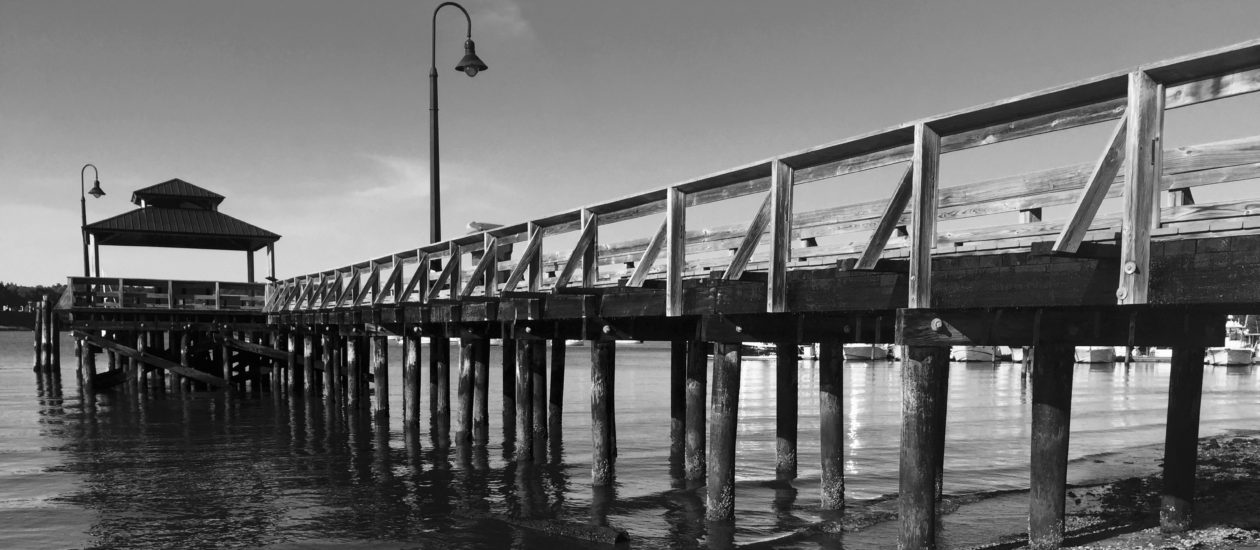It’s not just another fish story.
The viral menhaden mortality “event” of this spring is a story with veracity and an urgent call for what Clean Ocean Action has dubbed “citizen scientist observers” to document it as the environmental group pushes for solutions on the state and federal levels.
It’s been seen before, as in the above photo gallery of 2017 photos at Fair Haven Dock — a menhaden, or bunker fish, flood on the shores of the Navesink and Shrewsbury rivers.
Back then it was viewed as more of a naturally occurring event attributed to what was considered by the NJ Department of Environmental Protection (NJDEP) officials to be typical of the life cycle.
It was thought then — even though the year before alarming rises in bacteria in the rivers was found — that the clusters of dead fish came from bluefish predator shoves into shallow water where oxygen levels were depleted and fish died. The deaths in the Navesink River were thought then to be isolated and having no correlation with the bacteria levels or reason for alarm.
But there are correlations. And the menhaden death rate now is alarming to state officials and environmentalists. The same neurological defect in the fish has reared its bacteria-riddled brain, showing observers the same 2017 violent spinning death pattern en masse.
The bunker fish mortality is back with vengeance. And now, Clean Ocean Action leaders think, it’s a cause for far more than marked concern. They’re pressuring state and federal environmental agencies to action.
The organization released a report recently, based on scientific analysis of the dead fish via “histopathologic evaluation, gross necropsy, microbiology, and genetic methods including virus isolation and bacteria evaluation” determined that a bacteria called Vibrio anguillarum was causing infection of the fish in and the chronic mortalities from the past couple of months and weeks, the report from COA said. Vibrio “is a gram-negative bacteria commonly found in ocean and brackish waters during warmer temperatures (spring to early fall) and causes Vibriosis, which is a fatal hemorrhagic disease for marine and freshwater fishes, it added.
The NJ Department of Environmental Protection (NJDEP) released its preliminary report in early 2021 which was updated with more recent findings in March 2021, the report from COA said. NJDEP is continuing its investigation with recent samples collected from the Navesink River and results are pending, it added.
The fish deaths have been “characterized by uncoordinated and erratic swimming behavior. Dying menhadens appear disoriented, and lethargic near the water surface, almost swirling in circles.” Same as in 2017 when it was thought to be isolated and insignificant. Vibrio causes neurologic impairment and malfunction. The fish are washing ashore and have been seen in the tens of thousands along the Jersey coast and prominently in the Rumson-Fair Haven area from the fall of 2020 until now.
The reason for urgent concern and COA and DEP calls to action: “Menhaden are a keystone species for the food web,” the COA report said. The organization is calling for “fast” federal and state funding to research Vibrio’s effects on the food chain and possible solutions.
In the meantime, the call to action involves those citizen scientist observers documenting the present and future mortality events.
Observations should be shared with the NJDEP through the WARN DEP Hotline: 1-877-WARN-DEP (1-877-927-6337). For more information on how to report fish kills, including a fish kill reporting form, visit NJDEP Division of Fish & Wildlife. This data will help to inform the NJDEP’s ongoing investigation into the cause of this mortality event.
Click here for the menhaden mortality update from NJDEP, dated April 16.
Clean Ocean Action and its associated environmental organizations have more questions. Here’s the organization’s take and immediate response to the DEP.
Clean Ocean Action’s take-away of the ensuing April 19 meeting with NJDEP officials is here. It includes a push from COA to skim the waterways for the abundance of dead fish infected with the bacteria. They feel that contact with the fish by someone at risk could endanger them. The advice is to stay away from the washed-up fish.
“COA continues to urge that the NJDEP and NJDOH host a joint virtual public forum to update citizens and provide a means for questions and answers.
COA report on its blog
COA has also reached out to Senator Vin Gopal, who is working to address the problem.”
And the citizen action begins … https://www.facebook.com/CleanOcean/videos/123783146410875
— Photos/Elaine Van Develde
Click to enlarge and scroll …
- Prosecutor: Human Remains Unearthed at Construction Site; ‘No Foul Play’
- Prosecutor: Area Man Gets 30 Years for Killing Father, Desecrating Remains
- In Memoriam: Former Fair Haven, Little Silver Resident, 1945 RBR Grad, Elaine Inman Pope, 97
- Retro RFH Baseball Tackle Time
- Police Report: Burglary, Drugs, Theft, Assault by Auto, DUIs, Unlawful Weapons Possession, Terroristic Threats, Tobacco Sales to Underaged































You must be logged in to post a comment.